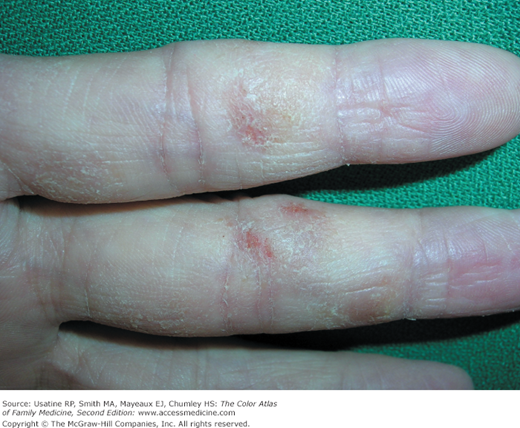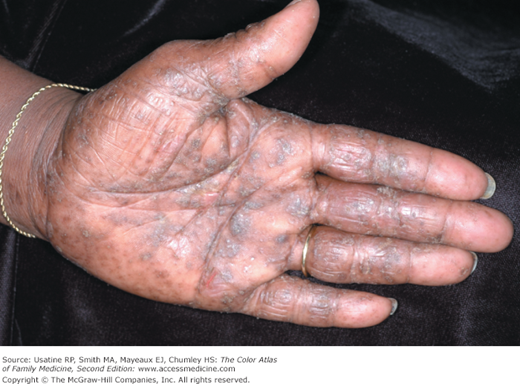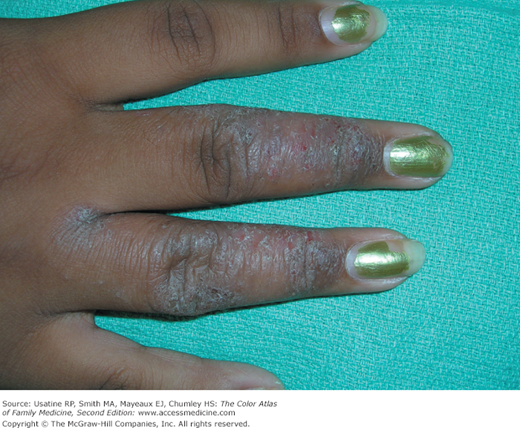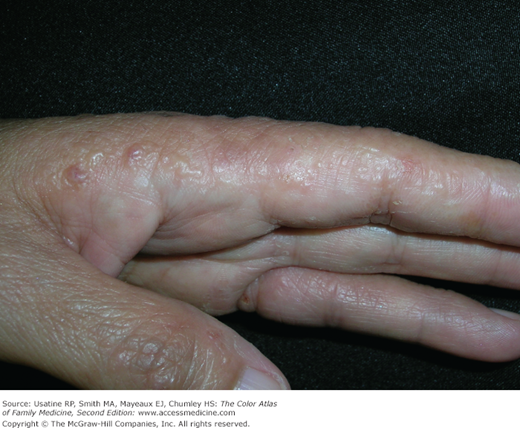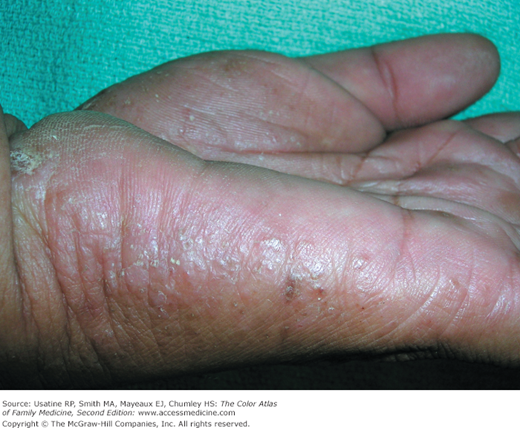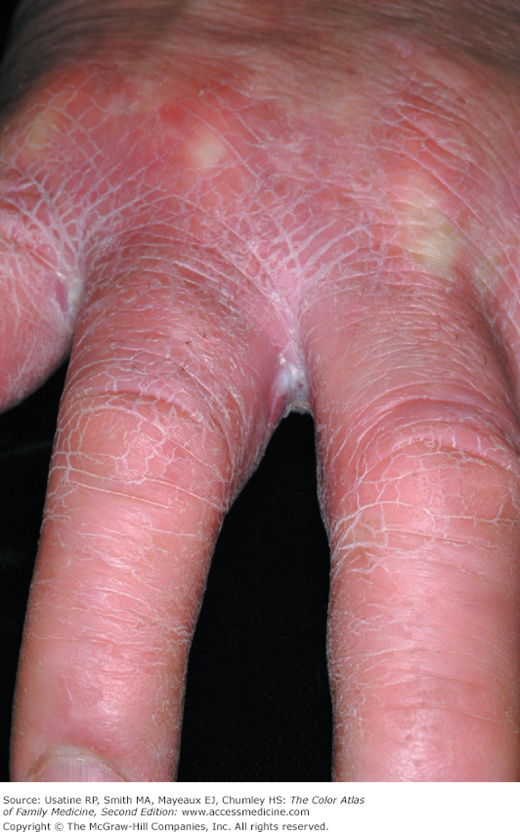Patient Story
An Asian American physician presents with dry scaling on her hands. Frequent hand washing makes it worse and it sometimes cracks. She has allergic rhinitis and she had more widespread atopic dermatitis in her youth. This is a case of chronic atopic hand dermatitis (Figure 147-1). The treatment suggested was use of Cetaphil (or equivalent nonsoap cleanser) instead of soap and water. She was directed to soak her hands 3 to 5 minutes in warm water every night, apply triamcinolone 0.1% ointment, and cover with cotton gloves overnight. Her hands cleared 90% with this treatment and she was pleased with the results.
Introduction
Synonyms
Hand dermatitis, pompholyx, dyshidrotic eczema, vesicular palmoplantar eczema. Although some people use pompholyx and dyshidrotic eczema synonymously, others reserve pompholyx for hand eczema with vesicles and bullae on the palms and dyshidrotic eczema for conditions with smaller vesicles between the fingers and toes.
Epidemiology
- The prevalence of hand dermatitis is estimated at approximately 2% to 8.9% in the general population.1
Etiology and Pathophysiology
- There are many clinical variants of hand dermatitis and a number of different classification schemas. Here is one accepted classification scheme:
Contact (i.e., allergic and irritant) (Figure 147-2).
Hyperkeratotic (i.e., psoriasiform) (Figure 147-3).
Frictional (Figure 147-4).
Nummular (Figure 147-5).
Atopic (Figure 147-6).
Pompholyx (i.e., dyshidrosis) (Figures 147-7 and 147-8).
Chronic vesicular hand dermatitis.1 (Figure 147-9)
- Another way of looking at hand dermatitis is to break it down into three categories:2
Endogenous—Atopic, psoriasis, pompholyx, dyshidrotic (we do not include psoriasis as a type of hand eczema in this chapter).
Exogenous—Allergic and irritant contact dermatitis.
Infectious—Tinea, Candida, and/or superimposed S. aureus (Figure 147-10).
- Most contact dermatitis of the hands is secondary to irritants such as soap, water, solvents, and other chemicals.
- Allergic contact dermatitis (ACD) is a type IV, delayed-type, cell-mediated, hypersensitivity reaction.
- The nine most frequent allergens related to hand contact dermatitis were identified by patch testing from 1994 to 2004.3 These are quaternium-15 (16.5%), formaldehyde (13.0%), nickel sulfate (12.2%), fragrance mix (11.3%), thiuram mix (10.2%), balsam of Peru (9.6%), carba mix (7.8%), neomycin sulfate (7.7%), and bacitracin (7.4%).3
- Rubber allergens were commonly associated with occupation. One third of patients with ACD had identifiable relevant irritants.3
- Most common allergens are preservatives, metals, fragrances, topical antibiotics, or rubber additives.3
Diagnosis
Contact (i.e., allergic and irritant) (Figure 147-2).
- Symptoms include burning, stinging, itching, and tenderness at the site of exposure to the irritant or allergen.1
- Acute signs include papules, vesicles, bullae, and edema.
- Weeping and crusting can occur with or without superinfection.
- Chronic signs include plaques with fissuring, hyperpigmentation, and/or lichenification.
- Irritant contact dermatitis may predispose to ACD.
Hyperkeratotic (i.e., psoriasiform) (Figure 147-3).
- Symmetric hyperkeratotic plaques.
- May be localized to the proximal or middle part of the palms.
- Painful fissures are common.
Frictional (Figure 147-4).
Stay updated, free articles. Join our Telegram channel

Full access? Get Clinical Tree


